| Author | Comment | |
|
141. 27 May 2010 07:43 |
|
|
Hazer
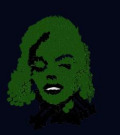 |
Too funny, five! ....Or how about placing the paper on your head and drawing your self portrait.
I just barely learned how to put on mascara in front of the mirror without losing an eye!......but if you think it helps you know I'm going to give it a try. I need a good laugh today!
|
|
142. 27 May 2010 07:53 |
|
|
five
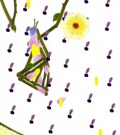 |
I just tried Q's suggestion to draw an object upside down. I drew one of my chairs, on paper, not TD. This was actually quite difficult  I have a bit of a headache. Like drawing in the mirror, the hand has to do the opposite of what the eye wants it to do. Good exercise. I have a bit of a headache. Like drawing in the mirror, the hand has to do the opposite of what the eye wants it to do. Good exercise.
Hazer, I want to see the self portrait you make with the paper on your head  . You can draw a form you feel/trace with your other hand. Also, a pretty good exercise. Part of the trick of improving drawing what you see is building the neural connections so your hand does a lot of the work on its own and you are not thinking (in a linear way) about things like distance or proportion. That comes with practice. . You can draw a form you feel/trace with your other hand. Also, a pretty good exercise. Part of the trick of improving drawing what you see is building the neural connections so your hand does a lot of the work on its own and you are not thinking (in a linear way) about things like distance or proportion. That comes with practice.
Ps. I still look in the mirror to put on mascara or put in my contacts. I don't like poking around my eyes. Other people seem to be able to do both without the mirror. Oh, well.
|
|
143. 27 May 2010 08:10 |
|
|
five
 |
I should note on my upside down object, I didn't actually turn the chair I was drawing upside down; I just drew it upside down. Probably gave myself more of a headache than the original suggested exercise would have.
|
|
144. 27 May 2010 08:42 |
|
|
Hazer
 |
Well, five and Q, I've come to the sad conclusion that I will never become a great artist...or even a mediocre one, for that matter. But that's okay...I've also survived the realization that I'll never be a famous singer or win any beauty pageants.
But seriously, now, are you saying that I can train my brain to not be so fixated on details? I'm one of those people who can give a very detailed description of a person or scene. I also need order and balance in my surroundings, because too much clutter and disarray makes me physically ill.
I'd love to be able to tune out that part of my brain.
|
|
145. 27 May 2010 09:56 |
|
|
five
 |
You can try, Hazer. : ) There are blessings in being able to take in and order a lot of details, though, if the details don't obscure the big picture/context. It depends on how you see the details, I guess. If you see them all in relation to one another, that's one thing; if you see them in unrelated discrete bits, it's another; I suspect it's somewhere in between. I think you can make other ways of seeing stronger, which would probably round out overly focusing on details.
I saw a show once about a process that is used to desensitize people who have paranoia(s). E.g. with someone who has a fear of snakes -- they gradually build from idea of a snake to looking a picture of a snake to looking at a snake in a cage to touching the snake to a snake crawling on person. We're pretty adaptable.
Mum23, one other thing ... I think TD makes it much more likely you'll focus on details since you are building from small pieces; it's hard to just lay down big shapes. Drawing/painting on paper, etc., will help.
|
|
146. 27 May 2010 13:22 |
|
|
Qsilv
 |
This is a fun series you've spawned, Mum...
A trick I was taught, mumbledy-leben years ago, way pre-BettyEdwards, is to draw with your eyes open but looking ONLY at the subject, NOT peeking down at the paper.
Takes a bit of practice to not fall off the page entirely, but you'll be astonished at how effective a drawing you can produce this way.
Helps to use your other hand as a kind of edge finder...
Also helps to never lift your pencil off the paper at all... just let lines cross when you need to get from one point to another... it's ok that they'll show.
Eventually you'll get fancier and draw those with a lighter touch, and/or choose their path to be a meaningful one. In fact, it's that awareness of meaningful paths that you're trying to enhance your awareness of.
|
|
147. 27 May 2010 15:34 |
|
|
mum23
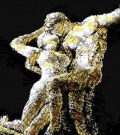 |
Fantastic ideas here.... thank you so much for sharing them!! I can't wait to try them all!
Oddly enough, a couple of days ago the kids and I were playing a game on the floor... my daughter was sitting cross-legged to the side of me. I idly sketched her foot, which was upside down to me, and was staggered by the result!
I can really see how some of the exercises which Qsilv and five have posted would help... thank you, thank you!
|
|
148. 27 May 2010 19:50 |
|
|
polenta
 |
from a newcomer to drawing and a total amateur and daring person(because I'm anonymous) as I am.....
FIRST TRY THE STRUCTURE IN ITSELF.... THEN THE DETAILS.
Is this too crazy? Am I wrong? Please especially those who have studied art or are in-born artists. Sorry if I'm absolutely wrong.
|
|
149. 27 May 2010 21:15 |
|
|
Qsilv
 |
polenta - you are not wrong. In fact it's important to keep one eye on the structure always, even after you do get into the details, or the whole thing can rather easily become skewed.
Having said that, I'd like to point out that "right" and "wrong" are dangerous language. But as a principle, rather than a rule, the above works effectively.
|
|
150. 28 May 2010 08:16 |
|
|
five
 |
Ditto, Q.
You can draw the entire picture accurately (assuming accuracy is what you are after) by focusing only on the details if you observe how the details relate to one another; properly placed details will end up describing the structure. For example, try drawing a leopard just looking at the direction and shape of, and color/value tones within, his spots, nothing else. If you really focus on getting each spot right, you'll end up describing the leopard's structure. In real world mediums, like paint, you can reach a point of heaviness or dullness with too many marks -- otherwise known as over-painting, partly from the way light passes through or bounces off the pigment particles and partly from not quite getting the placement of the details in relation to one another. In a way, Stanley's notion of taming the mess is a pretty accurate description. But it's a great moment when you see your marks work together.
You end up going back and forth between structure and detail; if you start with and get the structure right and then lay down the details in ways that don't work with the structure, you end up skewing or collapsing the structure. If you start with the details and don't keep in mind how they relate, the details end up floating randomly. Between the two, you can create tensions that energize a drawing/painting/image.
|
|
151. 30 May 2010 03:50 |
|
|
polenta
 |
2 great answers. So ALWAYS KEEP THE MAIN STRUCTURE IN MIND EVEN WHEN ADDING DETAILS.
Two things. As Q says, there's no right or wrong, you are right. This reminds me of language. Any lay person should say things the "right way" but when you KNOW THE RULE and you master it... and you are A REAL POET OR WRITER, the you have the poetic licence to BREAK THE RULE.
Another interesting thing to hear is the "overpainting". Something that could have to do with it is to know WHEN A PIC IS FINISHED, I suppose.
MERCI BEAUCOUP, THANKS A LOT FOR YOUR ANSWERS, VERY, VERY KIND.
|
|
152. 30 May 2010 03:57 |
|
|
polenta
 |
Sorry for connecting everything to LANGUAGE but this is the field where I feel more confortable in or I know more about even though I'm a foreign English speaker.
By the way, I was a little doubtful about the word LICENCE and I found in the Merriam Webster that LICENSE is a variation. Sorry, I don't know which one is the most used.... so I hope you forgive me.
|
|
153. 30 May 2010 05:10 |
|
|
mum23
 |
Ha ha ha... I tried drawing with both hands at once, Qsilv... that is one boggling exercise! I haven't yet tried drawing with the paper on my head, as per Hazer's suggestion! I'll save that for a very rainy day, when the kids need entertaining! On second thoughts, I'll get them to do it, too!
Five, I've discovered that drawing a leopard on TD by depicting only his spots is well nigh impossible... for me at least! If somebody can do it, please let me see how! However, in real life it works brilliantly! It reminds me of the optical illusion with the dalmation in it.... http://www.moillusions.com/2006/05/hidden-dalmation-dog.html which works on that very principle!
Off TD, I'm having some success with the less-is-more approach, but here on TD I'm still being frustrated... the pictures which I've tried with less detail are hopelessly horrible! It's a big learning curve! I really appreciate your advice.... thank you!
Polenta, I think comparing the process of drawing with the use of language is brilliant. It makes perfect sense to me to think of it in those terms! By the way, LICENCE is the noun, or thing eg. 'He was granted a licence to drive a truck' and LICENSE is the verb, or action 'He was licensed to drive a truck'. This difference is true in most English-speaking languages, except the US, to my knowledge, where both noun and verb are spelled with an 's'.
|
|
154. 30 May 2010 05:25 |
|
|
polenta
 |
Very kind of you mum.
The spelling of LICENCE/SE makes me think that ;
1) Americans are crazy.
2)Other English speakers are crazy.
3)Uruguayans are crazy.
4) I'm in a good mood today.
|
|
155. 30 May 2010 05:26 |
|
|
mum23
 |
Oops, I meant English-speaking countries, not languages.... duh! It must be bedtime!
|
|
156. 30 May 2010 05:27 |
|
|
mum23
 |
Hey, we're all crazy, but if we're happy and crazy, things can't be too bad!
|
|
157. 30 May 2010 05:44 |
|
|
polenta
 |
Speaking about writing with both hands etc. I was born left-handed but when I went to school and saw everybody wrote with their right hand, I tried and it worked. Now I write with my right hand but for everything else I'm left handed. I can also write with my left hand but the handwriting is very childlike.
I can also write mirror writing, handwritten or print. I don't know how or why it came to me. But what is really surprising to me and I haven't found anything about it is writing like in the pic. This of course has to do with decades of teaching and having to write on a whiteboard and having a student just across from me and having to read what I write. In this way I can only write in print (small or big case) but never handwritten calligraphy
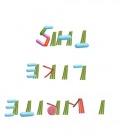 http://www.thinkdraw.com/picture.php?pictureId=107201 http://www.thinkdraw.com/picture.php?pictureId=107201
I've even had doctors who were my students but they have never said anything to me nor have I ever asked them. I dare say this here because it's anonymous. Does anyone have any knowledge about such cases?
|
|
158. 30 May 2010 09:36 |
|
|
Qsilv
 |
(smiles) polenta, if you mean that you write the words in the correct order but upside down, I used to do something similar.
As a kid I was ambidextrous, tho our culture makes it so much easier to apprach things as a right-side dominant person that by now my left hand produces writing that's as you described -- childish.
Even my eyes were equally dominant, so I could shoot a rifle off of either shoulder. No more. Now I'm right-handed and right-eyed unless I concentrate on using the other -- and that feels like hard work.
Back to this handwriting thing --
Up through high school I wrote with my right hand (because, as you said, everyone else did..) BUT I turned my hand at the wrist so my fingertips were pointed toward my body. Left-handed writers do this, but I was doing it with my right hand... and the result was upside down writing.
So I turned my paper too.
But that backfired... during a math exam a teacher walking by decided that it looked like I was showing my paper to other students. Without saying a word she picked up my paper and threw it into the trash. There ensued a huge brouhaha, and the upshot was I learned to write at all angles... lol
;>
|
|
159. 30 May 2010 09:46 |
|
|
polenta
 |
Qsilv,
I'm glad you do it too then... and a little relieved.
In fact since my student and I sit one across the other and the table between the two of us, I have a whiteboard on this table and write (print) so that my student can read it from his/her side.
From my side it looks like this:
 http://www.thinkdraw.com/picture.php?pictureId=107201 http://www.thinkdraw.com/picture.php?pictureId=107201
from their side they read it normally.
I guess this happens to you too. THANK GOD!!!!!!!!!!!!!!!!!!
|
|
160. 30 May 2010 12:49 |
|
|
five
 |
Mum, it is hard to do that leopard from his spots only on TD because it's hard to get small enough pieces without covering up (innate TD limitation); I was really thinking in general terms, not TD terms. But I gave it a go... 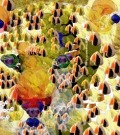 http://www.thinkdraw.com/picture.php?pictureId=107259 http://www.thinkdraw.com/picture.php?pictureId=107259
more or less.
|
